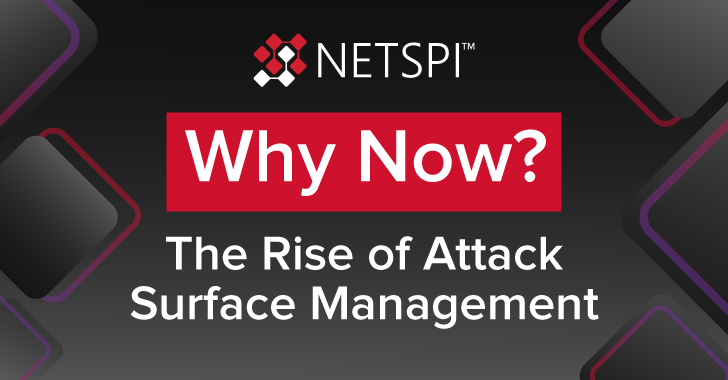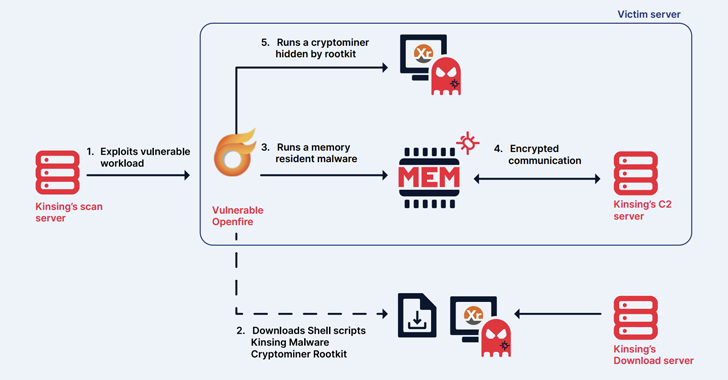
The
term
“attack
surface
management”
(ASM)
went
from
unknown
to
ubiquitous
in
the
cybersecurity
space
over
the
past
few
years.
Gartner
and
Forrester
have
both
highlighted
the
importance
of
ASM
recently,
multiple
solution
providers
have
emerged
in
the
space,
and
investment
and
acquisition
activity
have
seen
an
uptick.
Many
concepts
come
and
go
in
cybersecurity,
but
attack
surface
management
promises
to
have
staying
power.
As
it
evolves
into
a
critical
component
of
threat
and
exposure
management
strategies,
it’s
worth
examining
why
attack
surface
management
has
grown
to
become
a
key
category,
and
why
it
will
continue
to
be
a
necessity
for
organizations
worldwide.
What
is
Attack
Surface
Management?
Attack
surfaces
are
rapidly
expanding.
The
attack
surface
includes
any
IT
asset
connected
to
the
internet
–
applications,
IoT
devices,
Kubernetes
clusters,
cloud
platforms
–
that
threat
actors
could
infiltrate
and
exploit
to
perpetuate
an
attack.
A
company’s
attack
surface
faces
a
barrage
of
daily
attacks,
and
any
external
network
vulnerabilities
could
open
the
door
to
a
potential
breach.
Attack
surface
management
identifies
all
external
assets,
both
known
and
unknown,
with
the
intent
of
discovering
vulnerabilities
or
exposures
before
threat
actors
do.
It
also
prioritizes
vulnerabilities
based
on
risk
so
that
remediation
efforts
can
focus
on
the
most
critical
exposures.
By
taking
a
continuous
approach
to
attack
surface
management,
organizations
can
address
vulnerabilities
quickly
as
new,
more
sophisticated
threats
emerge
and
attack
surfaces
expand,
helping
to
better
protect
their
critical
assets.
What’s
Driving
Attack
Surface
Management
Adoption?
National
Institute
of
Standards
and
Technology
(NIST)
recommended
cataloging
external
assets
as
far
back
as
2014,
so
why
has
it
taken
until
now
for
attack
surface
management
to
see
more
widespread
adoption?
Several
recent
developments
and
trends
have
made
it
more
urgent
than
before.
-
Hybrid
Work
–
Facilitating
remote
work
makes
companies
more
dependent
on
technology
and
less
tethered
to
a
single
location,
both
of
which
lead
to
an
expanded
attack
surface
and
the
potential
for
increased
exposures. -
Cloud
Computing
–
Rapid
cloud
adoption
has
also
expanded
the
attack
surface
faster
than
many
security
and
IT
teams
can
keep
pace
with,
often
resulting
in
technical
debt
or
insecure
configurations. -
Shadow
IT
–
Employees
now
frequently
use
their
own
devices
and
services
to
handle
company
data
without
alerting
the
IT
department
or
securing
this
“shadow
IT”
by
following
proper
protocols. -
Connected
Devices
–
The
proliferation
of
internet-connected
devices,
from
smartphones
to
sensors,
in
business
environments
has
created
a
new
and
growing
corner
of
the
attack
surface
at
high
risk
due
to
the
relative
insecurity
of
many
IoT
devices. -
Digital
Transformation
–
Companies
are
digitizing
as
broadly,
deeply,
and
quickly
as
possible
to
stay
competitive,
creating
new
layers
of
the
attack
surface
while
altering
the
layers
already
in
place. -
Development
Expectations
–
The
expectation
to
constantly
be
launching
new
features
and
products
has
influenced
the
speed
at
which
technologies
go-to-market.
The
pressure
to
meet
these
demands
can
lead
to
new
lines
of
code
being
written
hastily,
without
thorough
security
checks
in
place.Finding
a
way
to
innovate
with
confidence
requires
implementing
robust
security
practices
and
integrating
security
into
every
stage
of
the
development
process.
The
attack
surface
has
become
significantly
more
widespread
and
unwieldy
as
organizations
grow
their
IT
infrastructure
while
facing
resource
shortages.
At
the
same
time,
their
external-facing
assets
are
susceptible
to
more
threats
than
ever
(a
record-breaking
146
billion
cyber
threats
were
detected
in
2022).
Attack
surface
management
is
an
effective
solution
to
key
challenges
overwhelming
security
teams
of
all
sizes.
In
short
order,
however,
it
has
evolved
into
something
much
bigger
than
that:
the
frontline
of
cybersecurity.
What
is
the
Future
of
Attack
Surface
Management?
As
organizations
of
all
sizes
and
across
industries
become
increasingly
dependent
on
the
digital
world,
the
attack
surface
becomes
both
more
challenging
to
secure
and
critical
to
protect.
NetSPI’s
Attack
Surface
Management
solution
combines
cutting-edge
technology
with
extensive
offensive
security
expertise
to
provide
the
richest
insight
into
the
attack
surface.
NetSPI’s
team
and
tools
empower
security
staff
to
protect
an
ever-expanding
number
of
assets
and
address
vulnerabilities
with
prioritized
remediation
actions.
And
by
making
the
external
attack
surface
as
difficult
to
penetrate
as
possible,
companies
prevent
more
attacks
before
they
even
start,
further
improving
the
effectiveness
of
the
security
team.
Attack
surface
management
is
at
the
forefront
of
the
cybersecurity
conversation
right
now
and
this
likely
won’t
change
anytime
soon.
Learn
more
about
advancing
your
offensive
security
program
by
connecting
directly
with
the
NetSPI
team.
Note:
This
expertly
contributed
article
is
written
by
Brianna
McGovern.
Brianna
is
NetSPI’s
Product
Manager,
Attack
Surface
Management
and
holds
a
degree
in
Industrial
Engineering
from
Penn
State
University.
NetSPI
is
the
global
leader
in
offensive
security,
delivering
the
most
comprehensive
suite
of
penetration
testing,
attack
surface
management,
and
breach
and
attack
simulation
solutions.
Through
a
combination
of
technology
innovation
and
human
ingenuity
NetSPI
helps
organizations
discover,
prioritize,
and
remediate
security
vulnerabilities.
Its
global
cybersecurity
experts
are
committed
to
securing
the
world’s
most
prominent
organizations,
including
nine
of
the
top
10
U.S.
banks,
four
of
the
top
five
leading
global
cloud
providers,
four
of
the
five
largest
healthcare
companies,
three
FAANG
companies,
seven
of
the
top
10
U.S.
retailers
&
e-commerce
companies,
and
many
of
the
Fortune
500.
NetSPI
is
headquartered
in
Minneapolis,
MN,
with
offices
across
the
U.S.,
Canada,
the
UK,
and
India.









